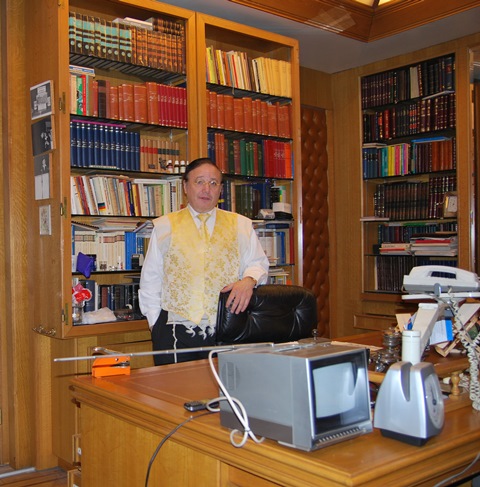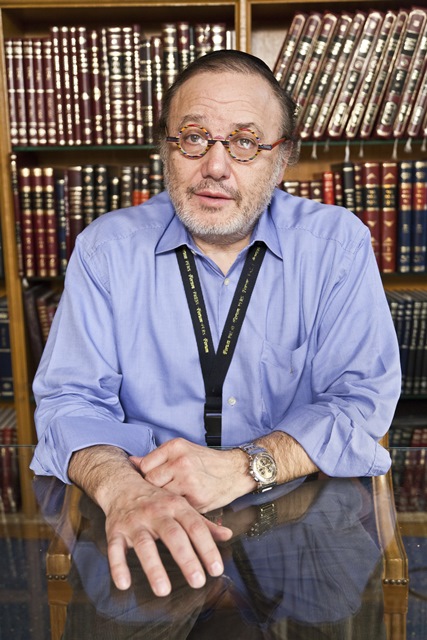Henry Rosenberg: "Improper Use of a Shabbat Hot Plate Can Be Fatal"
Henry Rosenberg is on a life mission to warn about unsafe Shabbat hot plates. "Not a single Shabbat goes by without at least a few fires resulting from these devices," he cautions. If you plan to rely on safety standards, Rosenberg warns: "There is no Israeli standard mark for hot plates at all." Planning your Shabbat cooking? Read this first.
 Henry Rosenberg
Henry RosenbergThursday is already here; Shabbat is approaching, and as every week, along with the preparations of the dishes, the electric hot plate is also brought out, on which the pots will be placed to warm throughout Shabbat. But have you ever thought that the hot plate might be dangerous? Maybe even fatal?
Henry Rosenberg, founder and chairman of the Jewish Consumer Protection Organization in Belgium, who is professionally a lawyer, rabbinical advocate, and lecturer on Jewish Law at the University of Antwerp, claims that it is nothing less than a scandal.
"I began investigating the matter since several hot plates I owned had wires or power boxes burned out. I had a feeling that these hot plates might pose a risk, and I closely followed the matter. About a year and a half ago, there was the horrific disaster of the Sassoon family from Brooklyn, where seven children perished due to a burning Shabbat hot plate, prompting me to investigate and understand what causes these devices to combust."
Rosenberg did indeed go out and investigate, and the conclusions he reached were very alarming. You are invited to continue reading his findings, and more importantly, to draw the necessary conclusions.
Danger: Hot Plates without Safety Standards
"I came to Israel specifically to check the hot plates sold in the country, one by one," Rosenberg tells us, "and what became clear is that, in fact, there is no Israeli standard mark for hot plates, so one must rely on the European and German standards. This seems okay, except I was horrified when I checked with the European standards institute and discovered that some products have not received any such standard mark."
According to Rosenberg, it is a first-degree danger since a hot plate that does not operate according to standards and contains 220 volts, without a transformer, can directly cause disaster. Because it does not regulate the heat as required, it can also catch fire.

"I must emphasize that not all hot plates are problematic, and I did encounter plates that met the requirements. However, they were usually more expensive, costing around 250 shekels, while the cheap ones cost about 100 shekels."
The result of unsafe hot plates can be seen in practice since anyone following the issue can notice that in recent years there have been quite a few fire incidents caused by using electric hot plates. Firefighters report that there is not a single Shabbat when they are not called to fires that break out due to hot plates catching fire, and it is hard to forget the disaster that happened less than a year ago to a couple from the Romema neighborhood in Jerusalem who were found lifeless in their home after a Shabbat hot plate malfunctioned.
And why indeed do so many disasters occur due to the hot plates?
"As I said," Rosenberg repeats, "there are many hot plates on the market without a standard mark, but in addition, there are those sold with a standard mark that break down over the years and undergo unprofessional repairs, or worse yet – no repairs at all, and continue to be used with defective heating elements or exposed electrical wires. Such hot plates can cause an immediate fire when they ignite because it does not require an open flame to cause the plate to burn; it is enough for the plate to accumulate maximum heat over Shabbat and ignite."
Rosenberg also warns that the danger increases even further when people cover the plate with blankets and towels to keep the food warm. Doing so raises the heat level, which at some point can cause a fire.
"Manufacturers Are Unaware of Jewish Needs"
Rosenberg conducted his personal research with the standards institute, where he was told that the hot plate is an electrical product that, although it has no Israeli standard mark, it is checked by the institute.
"The standards institute treats hot plates coming from abroad as safe plates, which is supposedly true," says Rosenberg, "except they do not understand that the manufacturers of these hot plates worldwide are non-Jews who are not familiar with the product called a hot plate, because it is a Jewish product. The Chinese responsible for the production of hot plates do not imagine, for example, that a Shabbat hot plate can often be connected to electricity for several continuous days. They also do not know that it is customary to wrap the plate in foil, and then the heat can reach its back side.
"I am not blaming, but my demand is from the Israeli standards institute because they do know for what use the Jewish plates are intended, and they must end this risk."

However, Rosenberg emphasizes that electric hot plates, with all the existing issues, are still considered safer than non-electric plates – those known as 'blech'.
"Here it is important to emphasize," he says, "that even the standards institute does not give its approval to blechs. Because the whole topic of the blech is a product of Jewish ingenuity, there are no international standards or protocols on the subject. The blech is like a pot, and as we all know - when a pot is placed on a stove, caution must be exercised, so it should also be with the blech, and in my opinion, it should not be used."
A Mission of Saving Lives
And what can you say to those who want to welcome Shabbat peacefully and not constantly worry that their hot plate will burn and the house will catch on fire?
Rosenberg recommends a few simple steps:
- Firstly, it is important to use an electric hot plate that has received all the required standards, not a blech.
- Before connecting the hot plate to electricity, ensure it is intact and stable, with no wires protruding, and no flammable materials nearby.
- Avoid covering the hot plate with a large number of blankets; instead, opt for covers specifically designed for hot plates.
In any case, Rosenberg promises to continue checking the matter. "The examination process is not yet complete, and these days I am about to submit a model of hot plates I believe might be problematic for the standards institute's analysis. Because if companies are indeed manufacturing hot plates with non-authentic standards symbols from abroad, it is a scandal.
"Additionally, I am speaking a lot with rabbis and urging people about the life-threatening risks involved in improper use of hot plates. I know that immediately after the Sassoon family's tragedy, there was an interesting initiative in Flatbush where community members were invited to come and have their hot plates inspected, and hundreds of families brought plates for inspection, during which some defects were discovered.
"We must get up and do a similar action in the country," he emphasizes, "and people need to check and ensure their plates are safe. Because it is nothing less than saving lives."

